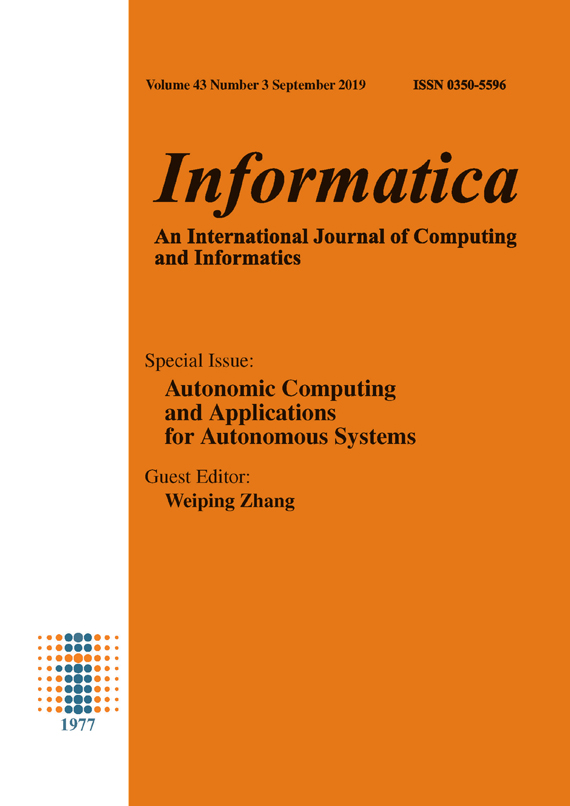Study on the Multivariant Interactive Teaching Modes of College English under the Information Technology Environment
DOI:
https://doi.org/10.31449/inf.v43i3.2807Abstract
Teaching modes can achieve twice the result with half the effort for teaching effect. The multivariant interactive teaching modes based on constructivism theory are a new kind of teaching modes supported by information technology. The multivariant interactive College English teaching modes under the information technology environment has changed the relationship between teachers and students in the classroom teaching process and the relationship between teachers and students and the teaching content. It can improve the quality of English teaching to achieve the goal of effectively improving the teaching effect of the course and improving students' ability of using English language. Based on the background of the information technology environment, this research takes the college students as the object and the multivariant interactive teaching modes as the research method and analyzes the effectiveness of the multivariant interactive teaching modes through an example.References
Huffman M K, Schuhmann K, Keller K, et al.
Interaction of drift and distinctiveness in L1 EnglishL2 Japanese learners[J]. Journal of the Acoustical
Society of America, 141(5), pp.3517-3517, 2017.
https://doi.org/10.1121/1.4987389
Kim S, Jang J, Cho T. Articulatory characteristics of
preboundary lengthening in interaction with
prominence on tri-syllabic words in American
English[J]. Journal of the Acoustical Society of
America, 142(4), pp.362, 2017.
https://doi.org/10.1121/1.5005132
[3] Huiyong Yang. Comprehensive Evaluation of
College English Teaching Mode Based on Online
Courses: An Educational Practice from Anhui
Polytechnic University[J]. International Journal of
Future Generation Communication and Networking,
vol. 9, no. 2, pp. 219-230, 2016.
https://doi.org/10.14257/ijfgcn.2016.9.2.23
[4] Triantafyllidis A K, Koutkias V G, Chouvarda I,
et al. Framework of sensor-based monitoring for
pervasive patient care[J]. Healthcare Technology
Letters, 3(3), pp.153-158, 2017.
https://doi.org/10.1049/htl.2016.0017
[5] Lee Jung Jae; Carson Maggie N; Clarke
Charlotte L; Yang Sook Ching; Nam Su Jin.Nursing
students’ learning dynamics with clinical
information and communication technology: A
constructive grounded theory approach.[J]Nurse
education today.pp.41-47.2018
https://doi.org/10.1016/j.nedt.2018.11.007
[6 ]Fuentes C D, Dutrénit G. Geographic proximity
and university–industry interaction: the case of
Mexico[J]. Journal of Technology Transfer, 41(2),
pp.329-348, 2016.
https://doi.org/10.1007/s10961-014-9364-9
[7] Neto P, Moreira A P. Preface for the special issue
on robotics in smart manufacturing[J]. International
Journal of Advanced Manufacturing Technology,
(1-4), pp.1-1, 2016.
https://doi.org/10.1007/s00170-014-6028-8
[8] Zhang L, Qin X, Liu P, et al. Estimation of carbon
sink fluxes in the Pearl River basin (China) based on
a water–rock–gas–organism interaction model[J].
Environmental Earth Sciences, 74(2), pp.945-952,
https://doi.org/10.1007/s12665-014-3788-2
Negash S, Musa P, Vogel D, et al. Healthcare
information technology for development:
improvements in people’s lives through innovations
in the uses of technologies[J]. Information
Technology for Development, 24(2), pp.189-197,
https://doi.org/10.1080/02681102.2018.1422477
[10] Armstrong D J, Riemenschneider C K, Giddens
L G. The advancement and persistence of women in
the information technology profession: An extension
of Ahuja's gendered theory of IT career stages[J].
Information Systems Journal, (12), 2018.
Downloads
Published
Issue
Section
License
I assign to Informatica, An International Journal of Computing and Informatics ("Journal") the copyright in the manuscript identified above and any additional material (figures, tables, illustrations, software or other information intended for publication) submitted as part of or as a supplement to the manuscript ("Paper") in all forms and media throughout the world, in all languages, for the full term of copyright, effective when and if the article is accepted for publication. This transfer includes the right to reproduce and/or to distribute the Paper to other journals or digital libraries in electronic and online forms and systems.
I understand that I retain the rights to use the pre-prints, off-prints, accepted manuscript and published journal Paper for personal use, scholarly purposes and internal institutional use.
In certain cases, I can ask for retaining the publishing rights of the Paper. The Journal can permit or deny the request for publishing rights, to which I fully agree.
I declare that the submitted Paper is original, has been written by the stated authors and has not been published elsewhere nor is currently being considered for publication by any other journal and will not be submitted for such review while under review by this Journal. The Paper contains no material that violates proprietary rights of any other person or entity. I have obtained written permission from copyright owners for any excerpts from copyrighted works that are included and have credited the sources in my article. I have informed the co-author(s) of the terms of this publishing agreement.
Copyright © Slovenian Society Informatika








